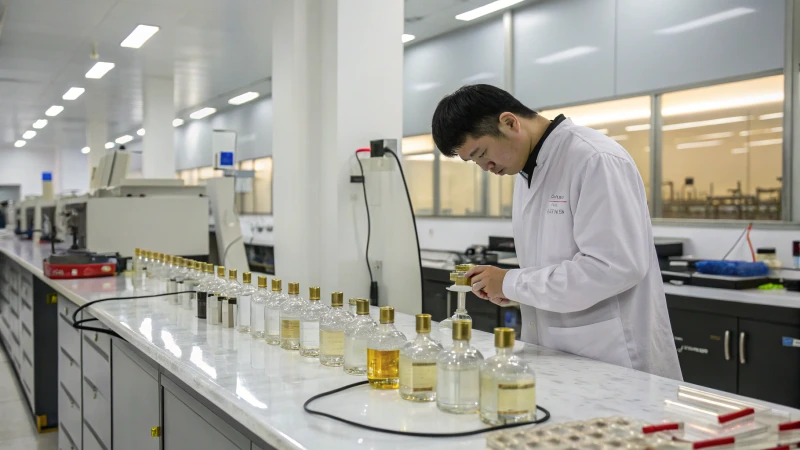
Ever wondered what it takes to keep a glass perfume bottle in tip-top shape? It’s more than just looks—it’s about safeguarding your fragrance.
To ensure the integrity of glass perfume bottles, I conduct ultrasonic testing for hidden cracks, check the material composition, and run simulated transport pressure tests. These methods help prevent damage and ensure durability, meeting industry standards for safe transportation and storage.
While initial testing might offer a glimpse into the bottle’s condition, diving deeper into the specifics of each testing method can greatly enhance reliability. I remember when I first started delving into quality control, I was amazed at how ultrasonic testing could reveal microcracks invisible to the naked eye. It was like discovering a secret world within the glass! By understanding these advanced techniques and getting practical advice, you can ensure that your perfume bottles not only look stunning but are robust enough to withstand the rigors of transport and everyday handling. Let’s explore these techniques further to maintain the high standards you deserve in your glass perfume bottle production.
Ultrasonic testing detects hidden cracks in glass bottles.True
Ultrasonic testing uses sound waves to identify internal defects.
Material composition checks are optional for glass bottles.False
Material composition checks are essential to ensure quality and durability.
How Does Glass Type Affect Perfume Bottle Durability?
Ever wondered why some perfume bottles survive a drop while others shatter instantly? It all comes down to the glass type.
The type of glass in a perfume bottle plays a crucial role in its durability. Soda-lime glass is affordable but less resistant to heat, while borosilicate glass offers superior strength against extreme conditions, making it perfect for luxury perfumes.
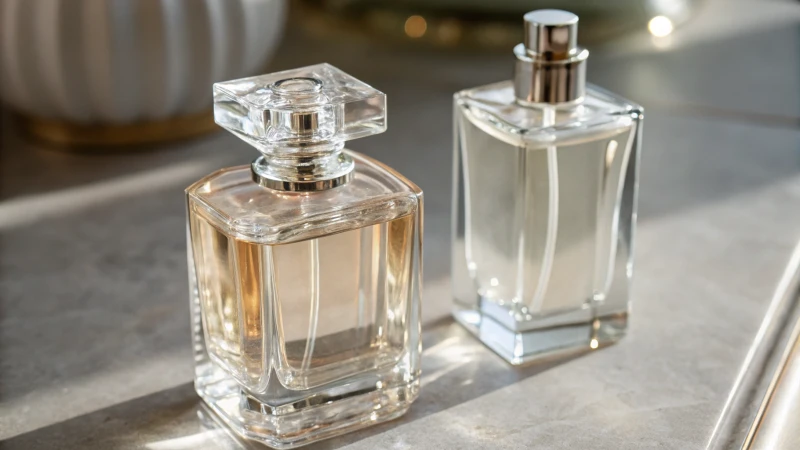
Comparing Glass Types: Soda-lime vs. Borosilicate
I remember the first time I realized the importance of choosing the right glass for perfume bottles. It was during a trade fair in Shanghai, where I witnessed firsthand how different glass types respond to stress. You see, soda-lime glass is commonly used because it’s easy on the budget. But let me tell you, it can be like that cheap umbrella that flips inside out with the slightest gust of wind—completely unreliable when faced with sudden temperature changes or long shipping journeys.
On the flip side, there’s borosilicate glass. Imagine it as the luxury SUV of glass types—sturdy and dependable, no matter what the road throws at it. It’s more costly, sure, but its ability to handle thermal fluctuations without cracking makes it a worthy investment, especially for those perfumes that travel far and wide.
| Feature | Soda-lime Glass | Borosilicate Glass |
|---|---|---|
| Cost | Low | High |
| Thermal Shock | Poor | Excellent |
| Pressure | Moderate | High |
Detection of Hidden Cracks
Even with top-notch glass, hidden flaws can sneak past our eyes. I learned about ultrasonic testing—a technique borrowed from aerospace engineering—at another industry conference. This test is like having a superpower that lets you see invisible cracks using sound waves, ensuring that every bottle is robust enough to uphold your brand’s reputation.
Implementing such advanced testing methods1 can be crucial for high-end perfume brands, where packaging integrity directly affects brand reputation.
Impact of Inner Coatings
The magic doesn’t stop at the glass. The bottle’s inner coating is crucial for maintaining fragrance integrity. It acts like a superhero shield, preventing nasty chemical reactions that could mess with your perfume’s scent. I once had a client who insisted on UV coatings to protect their citrus-infused perfumes from degradation. It was an eye-opener seeing how these coatings could extend both the perfume’s life and the bottle’s resilience.
For example, UV coatings are commonly used to protect sensitive perfume ingredients from degradation. Ensuring these coatings are applied evenly can enhance both the bottle’s durability2 and the perfume’s shelf life.
Stress Testing During Shipping
Simulating transport conditions is something I never skip. Picture this: your bottles endure a rollercoaster of vibrations and temperature swings before they land on store shelves. That’s why I advocate for simulated transport testing—it’s like giving your bottles a survival course before they face the real world.
By understanding how each type of glass performs under these tests allows us to make smarter choices, ensuring that our beautiful perfume bottles aren’t just pretty faces but also strong contenders in the rough and tumble of global shipping.
Soda-lime glass is more affordable than borosilicate.True
Soda-lime glass is cheaper due to its lower production costs.
Borosilicate glass cracks easily under thermal shock.False
Borosilicate glass resists thermal shock, making it durable.
Why Is Ultrasonic Testing Essential for Detecting Hidden Cracks?
Picture standing in a bustling factory, the hum of machinery all around, as you hold a delicate glass bottle. How do you ensure it’s flawless?
Ultrasonic testing employs high-frequency sound waves to uncover hidden cracks in materials, offering unparalleled precision. This non-destructive technique is vital for ensuring safety and reliability across diverse industries, revealing flaws invisible to the naked eye.
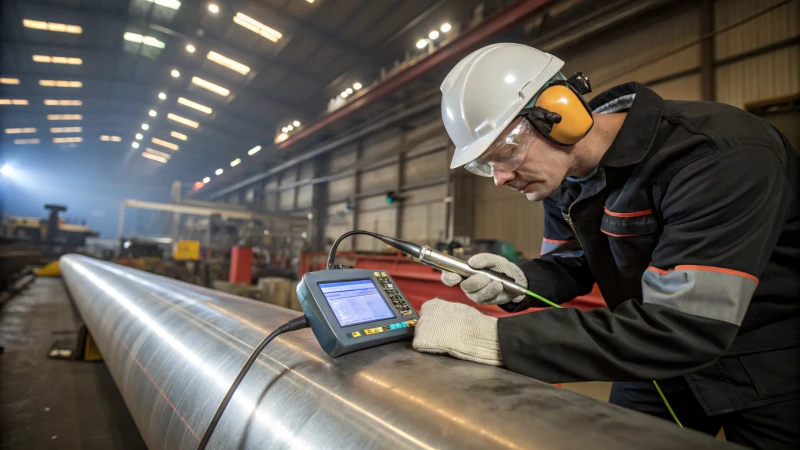
Understanding Ultrasonic Testing
Let me take you on a journey into the world of ultrasonic testing, a fascinating non-destructive method that uses high-frequency sound waves to delve into materials and uncover hidden flaws. I remember the first time I saw it in action at a glass cosmetic package factory; it was like witnessing magic as those waves revealed defects that the eye couldn’t see. This method is incredibly valuable in industries3 like aerospace and automotive, where the integrity of materials is crucial for safety.
How Does Ultrasonic Testing Work?
Imagine sending sound waves into a material, and when they hit a crack, they bounce back. That’s precisely what happens in ultrasonic testing. The data from these reflections is analyzed to pinpoint the size and location of the defect. This precision, akin to finding a needle in a haystack, makes ultrasonic testing indispensable for quality assurance. The first time I saw this pinpointing in action, it was like watching a detective at work.
| Advantages of Ultrasonic Testing | Description |
|---|---|
| Non-Destructive | Does not damage the test material. |
| High Precision | Detects minute flaws invisible to naked eyes. |
| Versatile | Applicable to various materials including metals, plastics, and composites. |
Comparing Ultrasonic Testing with Other Methods
In my experience, visual inspections and dye penetrant tests have their limitations, especially when it comes to detecting internal flaws. Visual methods can’t see beyond the surface, while dye methods only work on surface defects. Ultrasonic testing penetrates deep into materials, uncovering internal defects like voids and hidden cracks. I recall a time when this method saved a batch of perfume bottles from potentially catastrophic failure during transport.
Applications Across Industries
Ultrasonic testing is like a superhero for various sectors:
- Aerospace: It ensures aircraft components are free from defects that could lead to catastrophic failures.
- Automotive: Critical components like engine blocks and tires undergo rigorous testing.
- Construction: It assesses the integrity of structures by identifying weaknesses in concrete or metal frameworks.
Challenges and Innovations
Despite its effectiveness, ultrasonic testing demands skilled operators for accurate data interpretation. But fear not! Recent advancements like automated systems and enhanced imaging techniques are making this process more accessible and reliable across industries. I remember discussing these innovations at a trade fair; the excitement was palpable as we realized how these improvements could transform quality assurance.
In summary, ultrasonic testing’s role in detecting hidden cracks is indispensable. Its ability to ensure safety and quality without damaging materials is unmatched across multiple fields.
Ultrasonic testing is destructive to materials.False
Ultrasonic testing is non-destructive, preserving material integrity.
Ultrasonic testing can detect micro-level defects.True
It uses sound waves to identify small, internal flaws accurately.
How Do Inner Coatings Enhance Perfume Longevity?
Ever wondered why your favorite perfume loses its scent over time? The secret might lie in the inner coatings of the perfume bottle.
Inner coatings in perfume bottles act as a protective barrier, preventing chemical reactions between the fragrance and the glass. This helps preserve the perfume’s aroma and quality by safeguarding against harmful interactions.
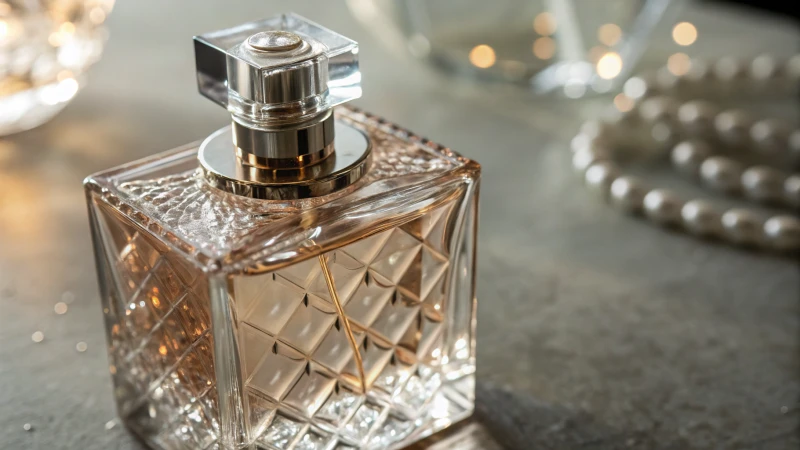
Importance of Inner Coatings
I remember the first time I noticed my favorite perfume starting to change. It was like losing an old friend—I was heartbroken. That led me to dive deep into what keeps a fragrance true to its original scent. It turns out, the glass bottle4 isn’t just there to look pretty. These bottles often have inner coatings that serve as a guardian against unwanted reactions between the perfume and the glass. Without these coatings, certain ingredients, especially those volatile oils, might react with minerals in the glass, altering the fragrance over time.
Types of Inner Coatings
-
UV Coatings: Have you ever left a bottle in the sunlight and noticed it smells different? UV coatings help by shielding the perfume from ultraviolet light, which can degrade sensitive ingredients. It’s like sunscreen for your scent!
-
Protective Barrier Coatings: These coatings are all about keeping peace between the perfume and the glass, stopping any sneaky leaching of minerals that could mess with the fragrance.
| Coating Type | Benefits |
|---|---|
| UV Coatings | Protects against sunlight and UV rays |
| Barrier Coatings | Prevents mineral leaching and reactions |
Challenges with Inner Coatings
Applying these coatings isn’t without its hurdles. I’ve learned that inconsistencies in thickness and uniformity can affect not just how effective they are but also how they look. And let’s be real—no one wants a bottle that looks less than luxurious. High-end brands demand both beauty and protection, making it a delicate balance.
Innovations in Inner Coatings
In my quest for understanding, I discovered recent advancements in coating technology. With nanotechnology5, we’re seeing thinner yet more effective barriers that don’t compromise on design. There’s also a growing focus on eco-friendly solutions, like biodegradable coatings, which offer both protection and a nod to sustainability.
So next time you spritz your favorite fragrance, remember that there’s a lot going on behind the scenes to keep it just as delightful as when you first fell in love with it.
Inner coatings prevent perfume scent degradation.True
Coatings protect against reactions with glass, preserving fragrance.
All perfumes use UV coatings for stability.False
Not all perfumes use UV coatings; some opt for barrier types.
How Can Simulated Transport Testing Prevent Shipping Damage?
Ever had that gut-wrenching moment when your product arrives damaged, ruining your hard work?
Simulated transport testing recreates real-world shipping conditions, identifying packaging weaknesses through vibration, drop, and pressure tests. This proactive approach helps prevent damage by ensuring products withstand transit challenges.
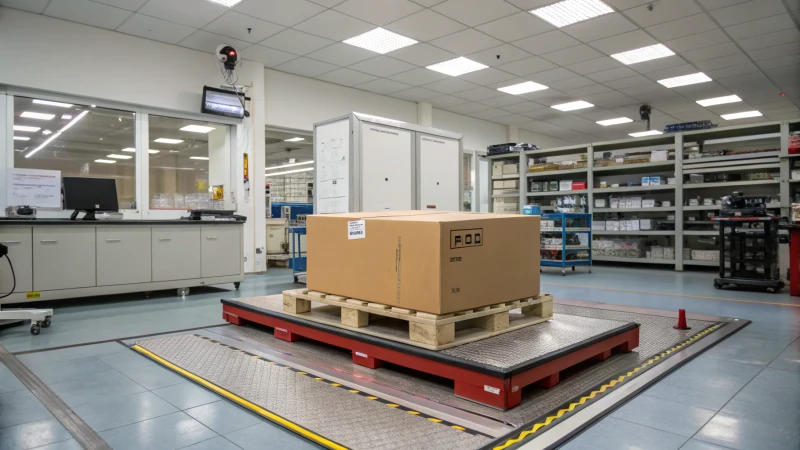
The Mechanics of Simulated Transport Testing
Let me tell you a story. Imagine you’ve just shipped a batch of beautifully crafted perfume bottles, meticulously designed with the most delicate glass. You’re thrilled, but then you get that dreaded call — some bottles arrived shattered. That’s where simulated transport testing swoops in to save the day.
This testing mimics the wild ride your products endure on their journey — the bumps, the shakes, even the temperature swings. It includes vibration tests6, drop tests, and pressure tests, all aiming to reveal those sneaky weak spots in the packaging.
Vibration Tests: Remember that time you drove down a bumpy road and everything in your car rattled? Vibration tests simulate that exact scenario for your products, helping you ensure your packaging is as sturdy as you need it to be.
| Test Type | Description |
|---|---|
| Vibration Test | Mimics real-world shaking and bouncing during transit |
| Drop Test | Assesses impact resistance from dropping |
| Pressure Test | Evaluates endurance against stacking and compression |
Drop Tests: Beyond the Usual
Think about when you accidentally drop your phone. Your heart stops, right? Drop tests make sure your product can handle those little accidents without breaking a sweat.
Temperature and Pressure Considerations
Have you ever left a chocolate bar in your car on a hot day? You know how it ends up. Similarly, temperature changes during shipping can weaken packaging materials. Simulated testing checks if your materials are up for the challenge of extreme temperatures.
Pressure is another silent killer. Imagine stacking heavy boxes on top of each other — pressure tests help ensure your packaging doesn’t cave under such weight.
Why Simulate?
So why bother with all this testing? Simple. It’s about peace of mind and protecting your brand. By simulating shipping conditions, you can tweak packaging designs to ensure products arrive safely at their destination. It reduces returns, boosts customer trust, and keeps your reputation sparkling.
For instance, using advanced vibration tables7 allows for precise control over test parameters, ensuring reliability in results. Similarly, integrating temperature fluctuation tests8 helps in assessing packaging resilience to extreme climates.
Benefits of Simulated Transport Testing
- Cost Efficiency: Spot and fix packaging issues before they lead to costly returns or replacements.
- Customer Satisfaction: Deliver intact products, win customer trust.
- Regulatory Compliance: Meet industry standards for packaging durability.
Understanding the importance of these tests9 is key to minimizing shipping damage and maintaining quality across your logistics chain.
Vibration tests mimic real-world transit conditions.True
Vibration tests replicate the shaking products endure during transport.
Simulated testing does not reduce shipping damage.False
Simulated testing identifies weaknesses, reducing potential shipping damage.
Conclusion
To ensure glass perfume bottles’ integrity, conduct ultrasonic testing for hidden cracks, check material composition, and perform simulated transport tests to prevent damage during shipping.
-
Learn how ultrasonic testing can detect hidden cracks in perfume bottles to ensure durability. ↩
-
Understand how UV coatings protect perfumes and enhance bottle durability. ↩
-
Discover which industries benefit most from using ultrasonic testing for quality assurance. ↩
-
Understanding the interaction between glass materials and perfume can highlight why inner coatings are essential for preserving scent. ↩
-
Exploring nanotechnology innovations can reveal cutting-edge solutions enhancing perfume bottle design and function. ↩
-
Understand how vibration tests simulate real-world transit conditions to improve packaging durability. ↩
-
Explore how advanced vibration tables offer precise control over testing parameters for accurate results. ↩
-
Learn how temperature fluctuation tests ensure packaging withstands extreme climates. ↩
-
Discover why implementing these tests is crucial for minimizing shipping damage and enhancing quality control. ↩



